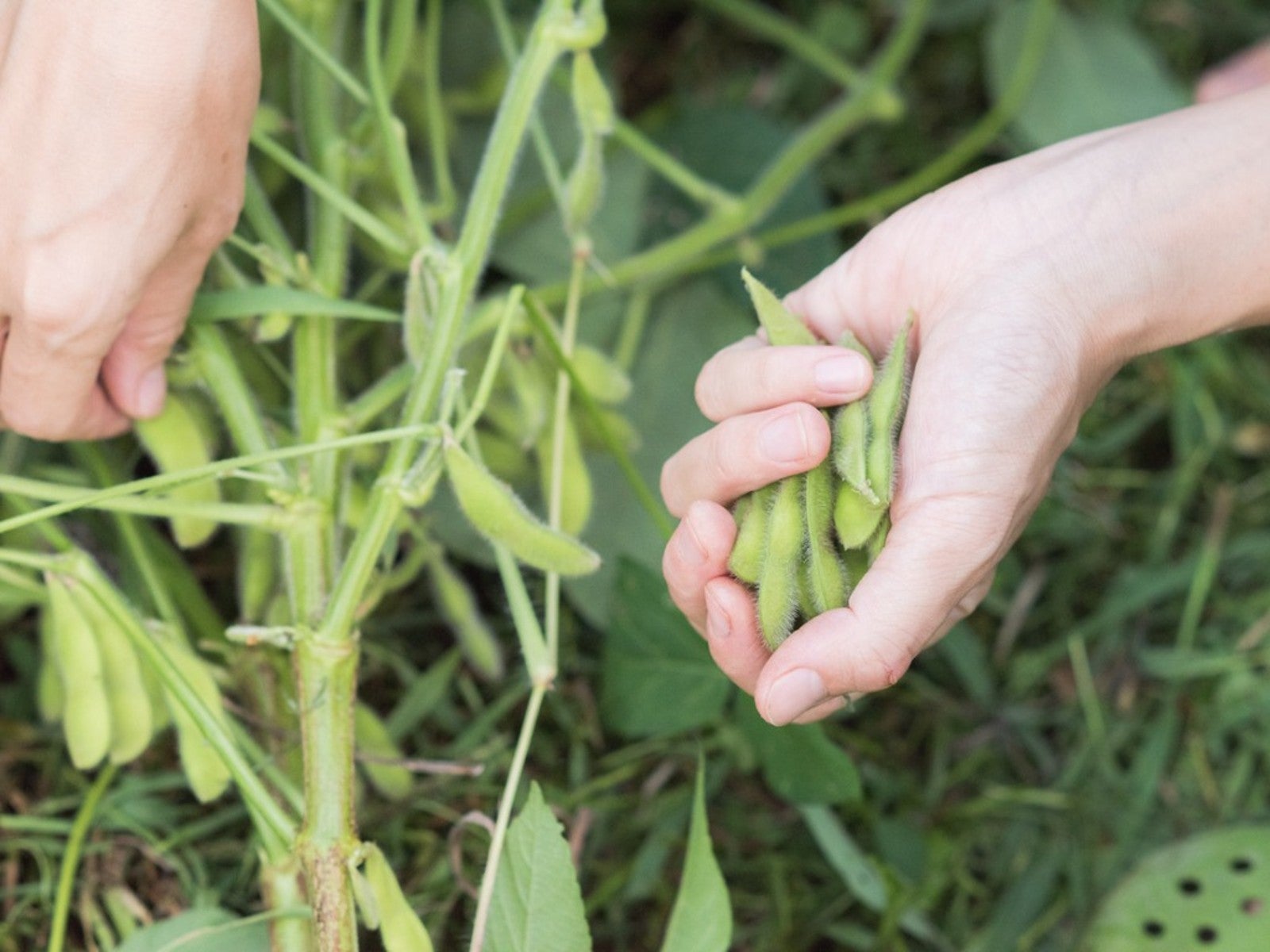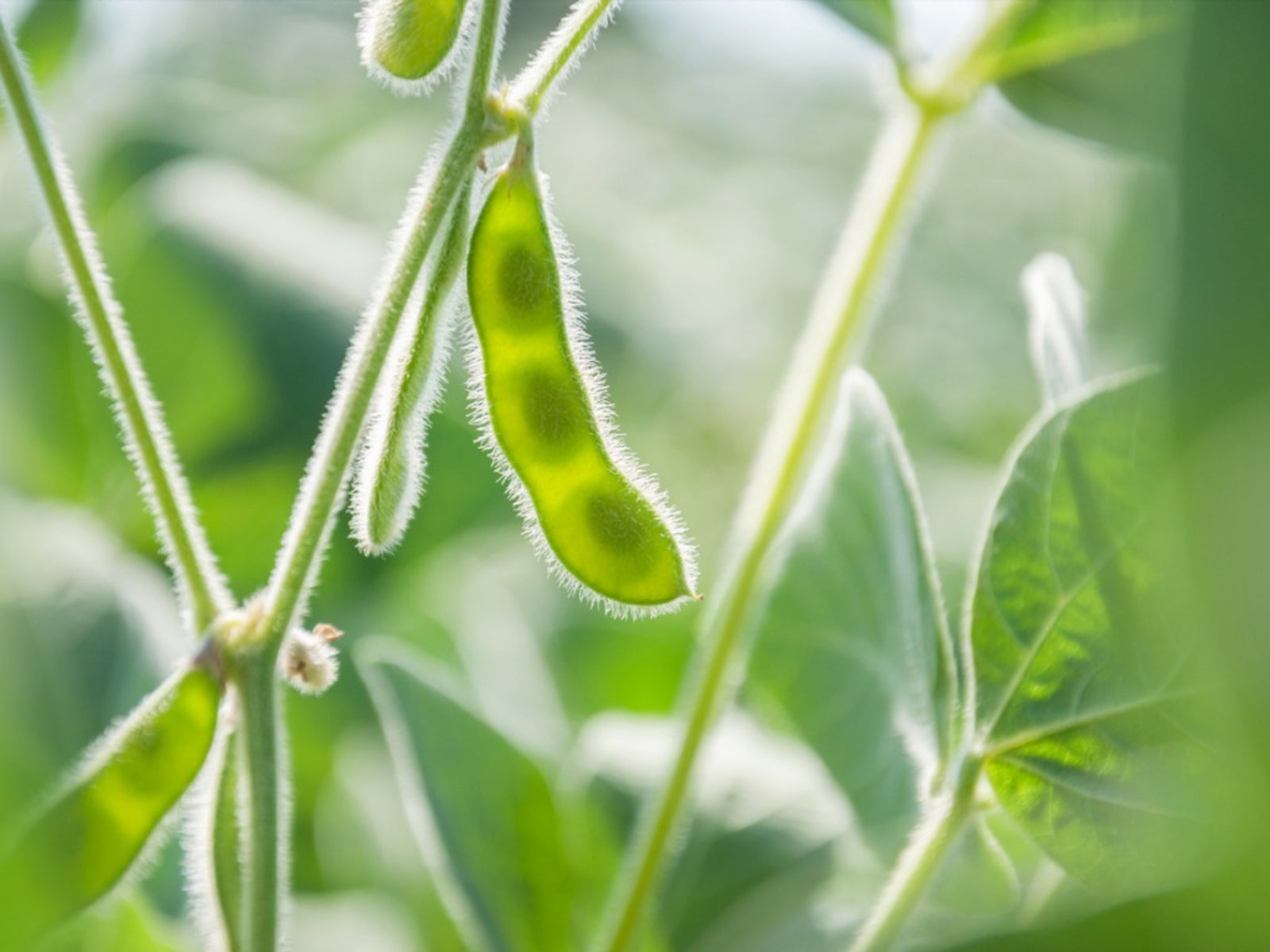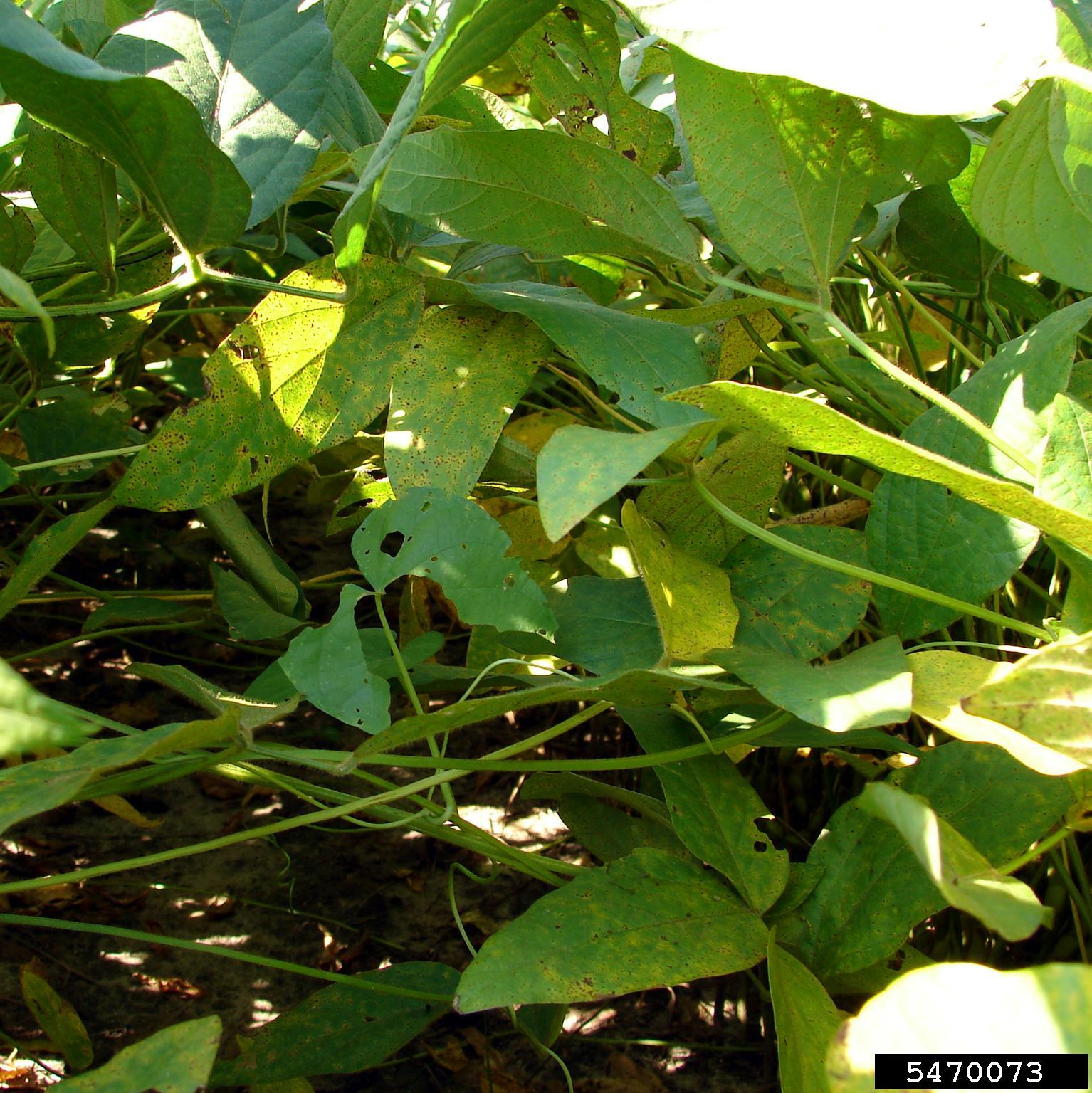How And When To Harvest Soybeans

A staple of Japanese cuisine, edamame is gaining in popularity around the globe. This means more growers are trying their hand at growing the seed, thus searching for answers as to when to harvest edamame and how to harvest soybeans. The following contains information harvesting edamame.
When do you Harvest Soybeans?
If you’ve eaten at a Japanese restaurant you’ve likely eaten delicious edamame. Edamame is simply the Japanese name for edible soybeans harvested and eaten when still green rather than dry. Edamame is not only delicious but healthy -- high in protein and containing phytochemicals.
Knowing when to harvest edamame can be a bit tricky. Varieties of edamame are classified into maturity groups 0-8 based on their day length requirements. Unfortunately, this rating is rarely provided on seed packages, leaving the grower to rely on an estimate of days from planting to harvest.
Another way to know when to harvest edamame is when the pods are plump yet still a brilliant green. In the pod, the seeds should be touching. Harvest the pods before they begin to yellow, at which point the beans will become starchy rather than sweet.
How to Harvest Edamame
All pods on a plant mature over a few days. Individual pods can be harvested as they mature or the entire plant can be pulled up (referred to as “on the branch”) when the majority of the pods have reached maturity.
Uncooked pods keep at refrigerated temperatures for about one week. To store the pods, blanch them for 3 minutes in boiling water, drain and rinse, and then seal them in a bag in the freezer.
Gardening tips, videos, info and more delivered right to your inbox!
Sign up for the Gardening Know How newsletter today and receive a free copy of our e-book "How to Grow Delicious Tomatoes".

Amy Grant has been gardening for 30 years and writing for 15. A professional chef and caterer, Amy's area of expertise is culinary gardening.
-
 Looking For Plants To Give You The Soft And Fuzzies? Try These 5 Fuzzy Leaf Plant Options
Looking For Plants To Give You The Soft And Fuzzies? Try These 5 Fuzzy Leaf Plant OptionsLovers of texture, drama, silver foliage and tactile plants will adore these special sensory garden additions. These fuzzy leaf plant options will leave you all aglow
By Susan Albert
-
 Get Ready For A Summer Of Hummers! Grow These Full Sun Hummingbird Plants and Flowers
Get Ready For A Summer Of Hummers! Grow These Full Sun Hummingbird Plants and FlowersIf you’re lucky enough to enjoy a sunny backyard, make sure you are maxing out on your pollinator opportunities and grow these full sun hummingbird plants and flowers
By Tonya Barnett
-
 Edamame Plant Companions: What To Plant With Edamame In The Garden
Edamame Plant Companions: What To Plant With Edamame In The GardenWhether you just plain enjoy the flavor or want to eat healthier, there's no time like the present to grow your own edamame. Before you plant your edamame, click here to find out what edamame plant companions can facilitate the plant's growth and production.
By Amy Grant
-
 Soybean Rust Disease: Learn About Soybean Rust Control In Gardens
Soybean Rust Disease: Learn About Soybean Rust Control In GardensThere is a disease that terrorized the soybean growing community! Today, it is important for growers to identify what soybean rust is, soybean rust symptoms and how to control soybean rust. This article should help with that.
By Amy Grant
-
 Growing Soybeans: Information On Soybeans In The Garden
Growing Soybeans: Information On Soybeans In The GardenWhile it?s not the most commonly planted crop in home gardens, many people are taking to growing soybeans in fields and reaping in the health benefits these crops provide. Learn about soybean plants in this article.
By Amy Grant